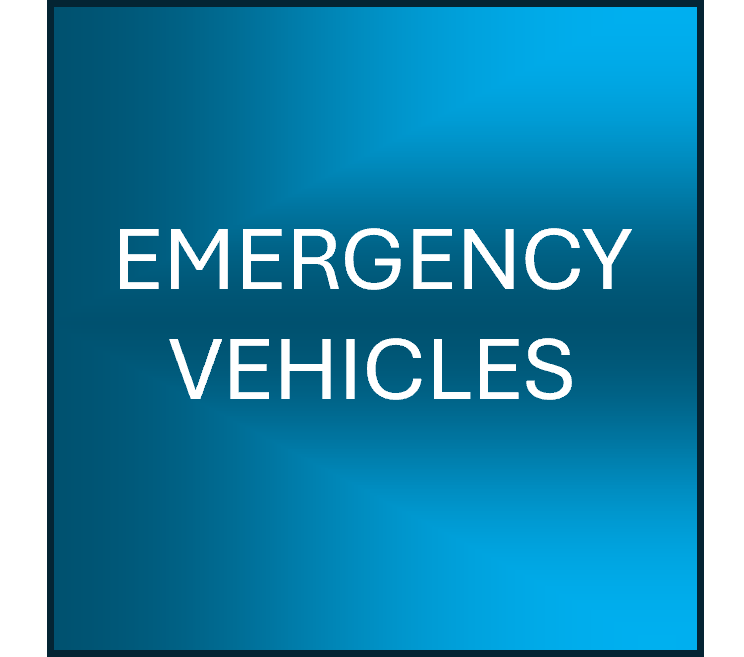
And what we should do when we see them.

And what we should do when we see them.

All very bright in colour with lots of lights and noise to let us know they are coming.
* Hearing sirens grab our attention whether consciously or subconsciously, but hearing them is one thing, finding out what direction the noise is coming from is another thing.
* Stay calm, use your mirrors effectively to work out in what direction the vehicle is coming from, and then work out what you are going to do if they are coming your way.
* They may be coming towards you, and you may need to adapt how you are driving, but most of the time when you may need to act is when they are coming up behind you.
* Attempt to spot if they have any signal indictors on.
* Are they intending changing lanes, or turning into a road before or after you?
Your actions to give them a clear path will help whoever they are trying to reach.
* It may be a case that you have to come to a complete stop.
* Generally, you’ll just need to slow down a little and move slightly to your left to allow them a clear path down the centre of the road.
* You might however be on a rural road with solid white lines and no facility to be able to pull over.
* Pulling over on a rural road with no kerb could put you in a ditch.
* Are there bends ahead which would make it unsafe for an emergency vehicle to overtake you?
If this is the case, keep driving at a safe speed until you can find a safe opportunity to pull in or move to your left to give a gap.
* Traffic lights, especially on red, is where driver's tend to panic most.
Other than being directed by a police officer to do so, you MUST NOT cross the stop line while the lights are red, It is against the law, and it could also result in you being involved in an accident by doing so.
* Blue light trained staff have exemptions! They can go through a red light, you cannot! If there is not a safe path for them, they should switch off their siren but leave their blue lights on. This means they are still in “Emergency mode” and as soon as the lights change to green, they will be looking at making speed again, so prepare to give them space as the lights change.
* Try and remember, the pavement is for pedestrians! Unless it is safe to do so you should not mount the kerb and drive onto the pavement to make way for emergency service vehicles.
* If a bus lane is available the emergency vehicle will use it, you are not permitted to use it even to get out of the way of an emergency vehicle, unless it has time of day periods when you can.
Various types of Police vehicle.
Police Cars, Vans, Motorcycles, Bicycles, Armoured Vehicles, Buses, Aviation and Watercraft.
Various types of Fire Vehicle.
Fire Engines, Airport crash tenders, Wildland fire engines, Fire command vehicles, Motorcycles, Light and air units, Water tenders, Firefighting aircraft, and fireboats.
Various types of Ambulance.
Ambulances, Ambulance buses, Bariatric Ambulances, Combination cars, Motorcycle Ambulances, Rail Ambulances, Air Medical services, and Water Ambulances, and Doctors.
Other types of emergency vehicle include:-
Bomb Disposal Vehicles
Blood Transfusion
Mountain Rescue
Internal Security vehicles
Military Police vehicles
Military vehicles, Hazardous material apparatus, Tow trucks and Volunteer responders
RNLI
HM Coastguard, The Forestry Commission, HM Revenue and Customs,
Highways England Vehicles tend to be 4x4's with Amber flashing lights.
In the UK, vehicles used for certain purposes may have exemptions from some road traffic regulations whilst responding to an emergency.
Merely being authorised to use blue lights and sirens does not of itself grant exemptions from road traffic law.
These exemptions apply whether or not blue lights and/or sirens are being used, although it is mainly desirable:
Treating a red traffic light as a give way sign
Passing to the right of a keep left sign or to the left of a keep right sign (but not disobeying a turn left, turn right, or ahead only sign)
Driving on a motorway hard shoulder (even against the direction of traffic)
Exceeding the statutory speed limit (police, fire and ambulance purposes only; and special forces purposes only for national security emergencies where the driver is trained or is being trained in high-speed driving)
Stopping on zig-zag lines
Parking in restricted areas, including against flow of traffic at night
Leaving the vehicle with the engine running, normally the offence of "quitting" (police and ambulance utilising the run lock feature on most cars)
Using audible warnings outside permitted hours
Using a bus lane during hours of operation